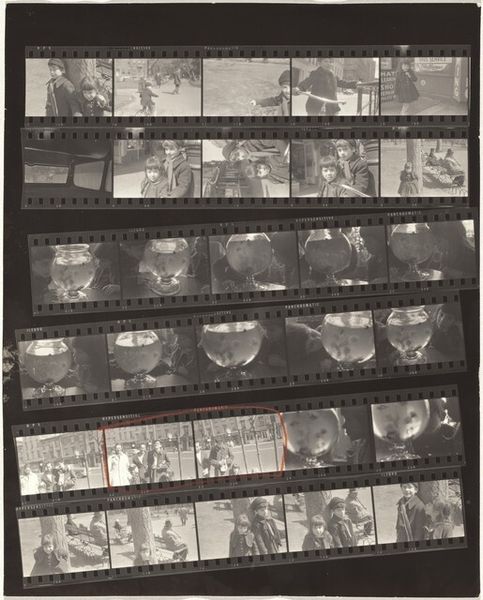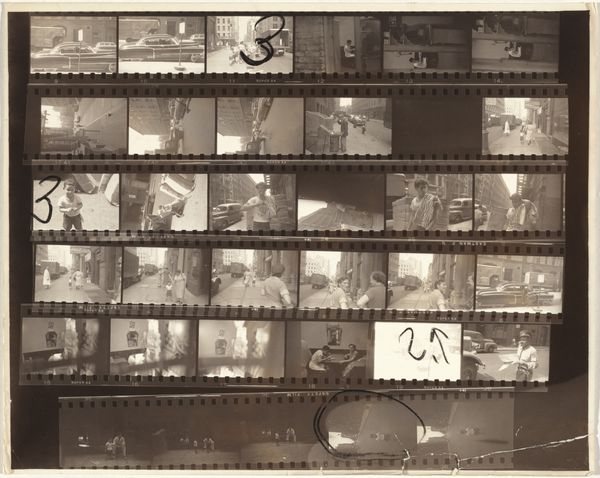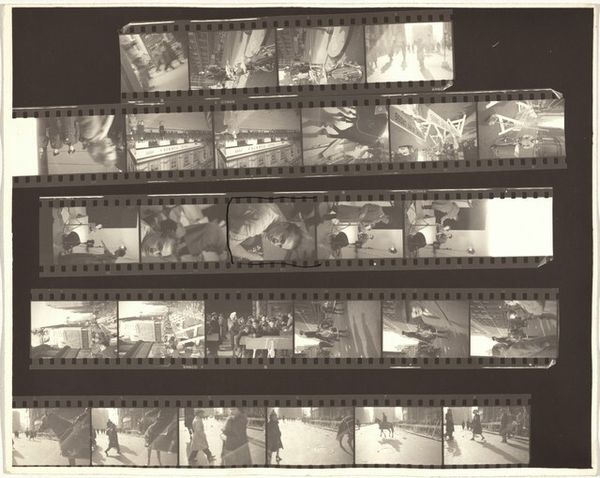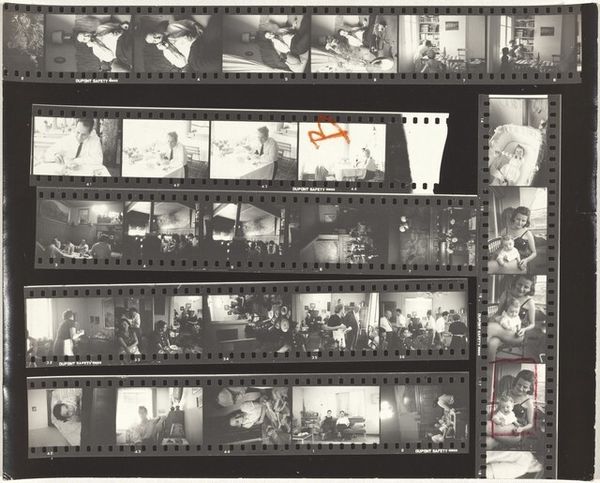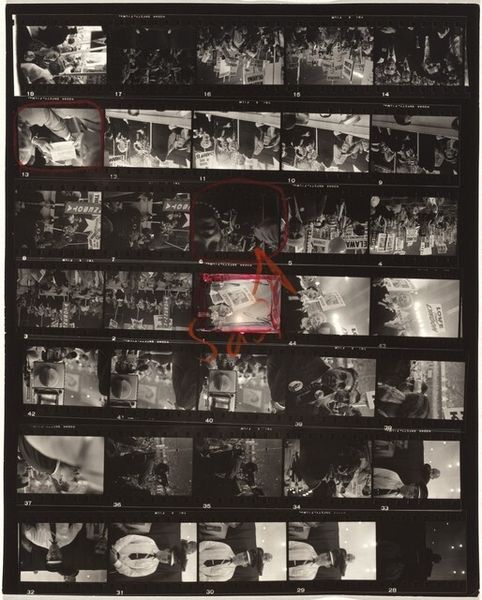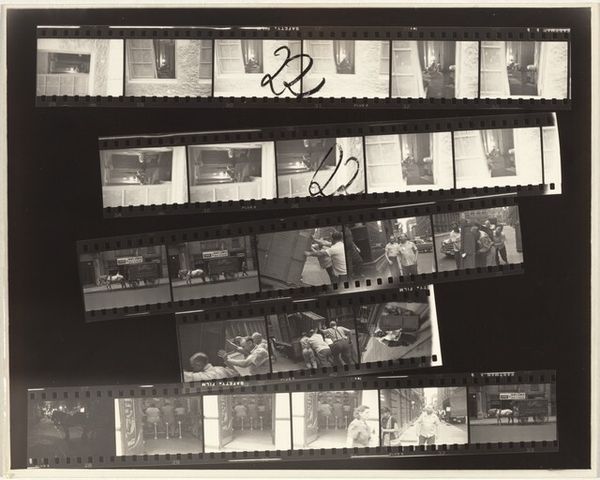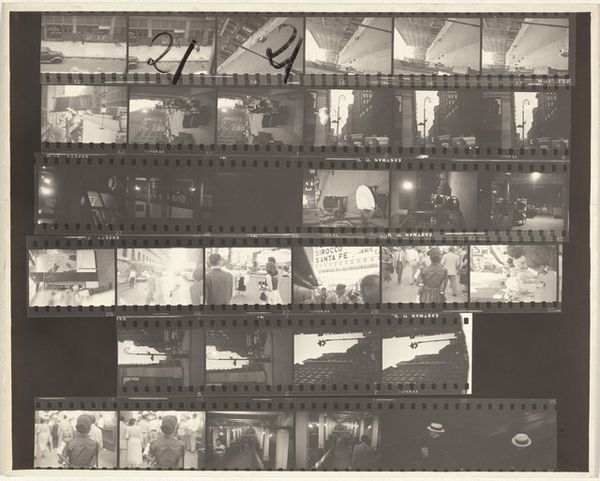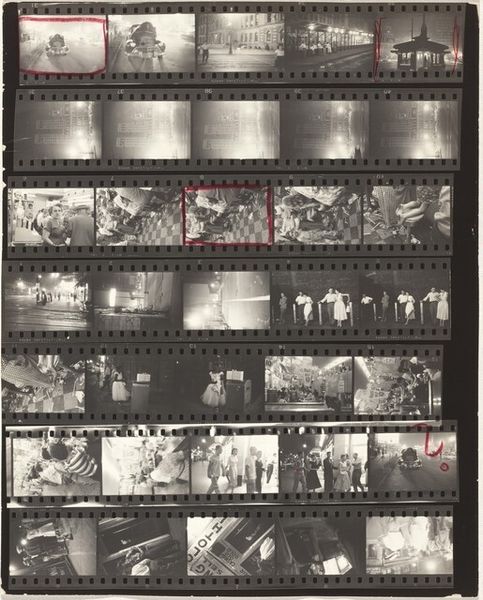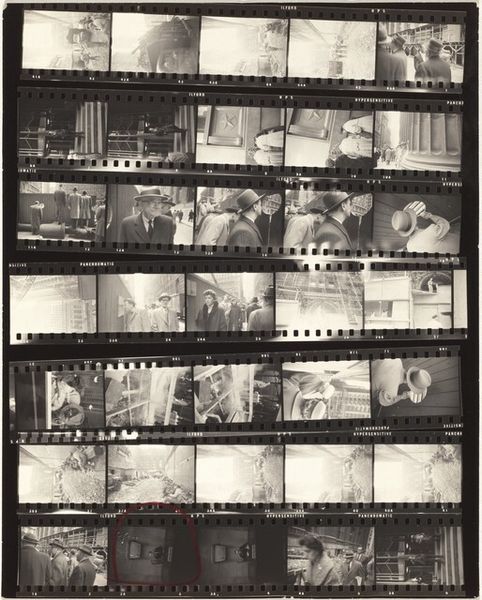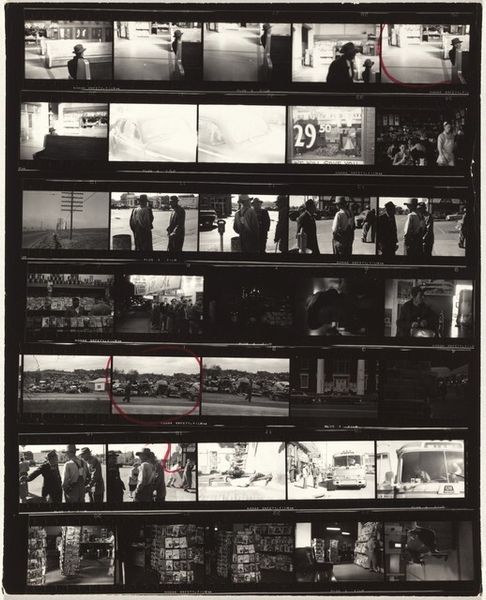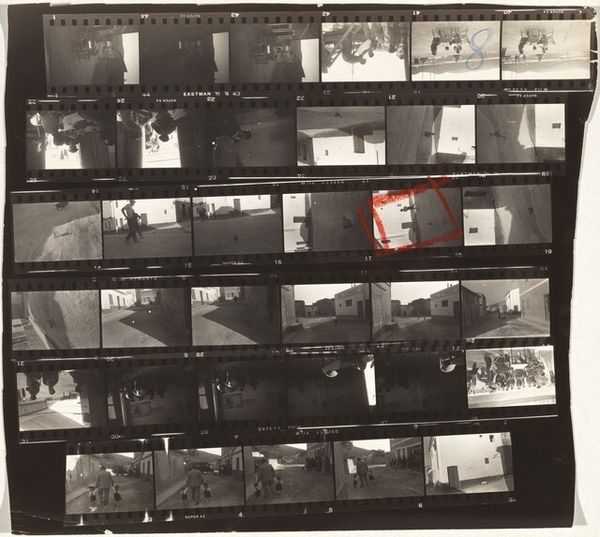
Dimensions: overall: 20.3 x 25.3 cm (8 x 9 15/16 in.)
Copyright: National Gallery of Art: CC0 1.0
Curator: Let’s turn our attention to this gelatin silver print by Robert Frank, dating circa 1951, titled "MacArthur parade--New York City no number." My first impression is of a historical record—a document. Editor: Immediately, I'm struck by the tonal range. The stark contrasts and gritty texture really evoke a sense of post-war grit and immediacy. And the filmstrip format itself, those sprocket holes, are fascinating! Curator: It’s presented as a contact sheet. Consider how Frank worked: the small camera, available light, grainy stock; he roamed through society documenting cultural fabric of America, shifting the aesthetic away from pristine prints. Here he immortalizes the triumphant return of General MacArthur after his controversial dismissal during the Korean War. The parades thrown in his honor were significant cultural flashpoints. Editor: That's precisely what gives it such depth! Formally, that presentation creates a serial effect; we see related, but distinct images that evoke movement through both time and space. Even with only some of the images focusing directly on the parade, a flow and cadence exist throughout. Curator: Exactly. This image operates within specific power structures. Think about it, Robert Frank who emigrated from Switzerland, is picturing America. A historical parade in NY city gets framed by a European photographer whose goal was to depict how ordinary Americans feel about historical or everyday events. Editor: There is something wonderfully incomplete about it, too. The film strip isn't perfect; we see scratches and dark edges as if there were minimal post-production on behalf of the artist; as if to highlight the "realness" you mentioned earlier. Curator: These physical imperfections actually amplify what I would consider the artwork’s intrinsic value. By exposing every single stage, not only the moment, Frank shifts the cultural perception and challenges viewers to rethink what makes it art, and for whom? Editor: Absolutely, those very “flaws” amplify the raw and intimate nature of its composition, creating a compelling aesthetic experience and shifting from that high/low binary! Curator: It's a powerful photograph and also photograph, I must say. This artwork truly is one that challenges perceptions.
Comments
No comments
Be the first to comment and join the conversation on the ultimate creative platform.
